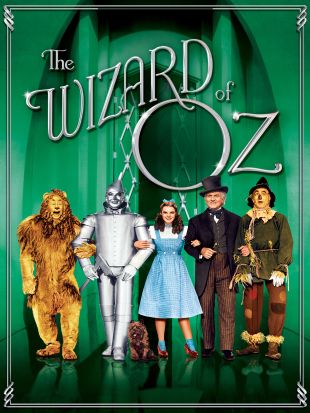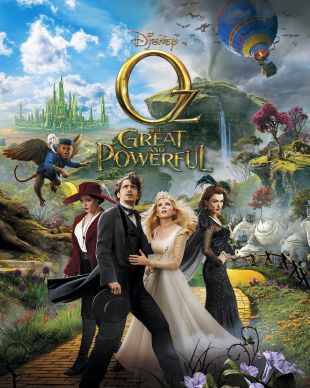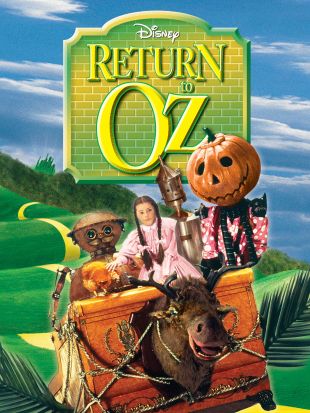L. Frank Baum is one of the most fondly remembered of all children's book authors, for The Wonderful Wizard of Oz and the entire Land of Oz as depicted in a dozen subsequent books. He was also one of the most successful authors of children's books of his era, and among the very first in America to bring his own works to the screen; indeed, he worked as a screenwriter, director, and producer, and founded his own movie studio -- all activities growing directly out of the popularity of his early Oz books. Born in Chittenango, NY, in 1856, Lyman Frank Baum was the son of Benjamin Ward Baum, a wealthy speculator in oil, and the former Cynthia Stanton. A sickly child with a congenitally weak constitution, he was educated at home, and whatever allure formal learning might have held was banished by a two-year stay at the Peekskill Military Academy that ended with him suffering a heart attack in 1870, at age 14. Baum spent his teens writing a family newspaper and journals on stamp collecting and the breeding of exotic chickens. He did some acting in New York in the 1880s and, with his family's backing, produced his own play, The Maid of Arran.
Baum became a children's book author by accident. His wife's mother asked him to write explanations of the nursery rhymes that he'd devised for his children. Those tales were published in 1897 as Mother Goose in Prose. He followed it two years later with Father Goose: His Book. When the elaborately devised volume proved too daunting a risk for any publisher, the author and illustrator together paid for the printing and enjoyed a bestseller. In 1900, Baum and Denslow published The Wonderful Wizard of Oz. It was so popular, that Baum was able to give up his other activities. Over the ensuing ten years, he wrote many dozens of further children's books, authored under a multitude of male and female pseudonyms, but it was the Oz books that immortalized him.
Baum's original intent in writing the first Oz book was to create a new kind of fairy tale, American in origin and basis, and appealing to American children. He sought to reduce, if not eliminate, the influence of European folklore, and also to avoid the kind of moral lessons that weighted down the work of the Brothers Grimm and Hans Christian Andersen. Baum's stories teach self-reliance and optimism, as well as an attachment to home and family, without the grimly oppressive moral tone. Ironically, he was never in as good a financial condition as that string of successes would lead one to expect, because of various entertainment ventures that never earned a profit. But it was those losses and setbacks that made it necessary for Baum to continually expand and extend the world and stories of Oz.
The Wonderful Wizard of Oz was brought to the Broadway stage by Baum in a 293-performance run that failed to make back its costs because of the expense of mounting it. Yet it was because of that theatrical production, and the popularity of a pair of comics -- David Montgomery and Fred Stone, as the Scarecrow and the Tin Woodman -- that Baum was obliged to extend his Oz stories. The Land of Oz (1904) focused on the Scarecrow and Tin Woodman, and also introduced a new character, Princess Ozma. It was a success as a book but a failure on-stage, and the losses incurred by the latter production forced Baum to extend his Oz stories still further. He published Ozma of Oz (1907), Dorothy and the Wizard of Oz (1908), and The Road to Oz (1909). In 1910, Baum moved his family west to the Los Angeles suburb of Hollywood. That same year, he wrote what he hoped would be the final Oz book, The Emerald City of Oz. His next two attempts at children's novels, The Sea Fairies (1911) and Sky Island (1912), were failures, however, and also coincided with Baum's declaration of bankruptcy. Finally, he succumbed to the inevitable. Unable to escape from the fantasy world he'd created, he declared himself the "Royal Historian of Oz" and wrote a further book about the magical land each year for the remainder of his life. In the midst of this run, he also founded the Oz Film Manufacturing Company, which produced a handful of movies in 1914.
Baum's health failed following a gall bladder operation in 1918, and he was bedridden for much of the remainder of his life. He died in 1919 just a few days before his 63rd birthday. Baum's estate continued to extend the Oz franchise, however, designating Ruth Plumly Thompson as the author to carry on the series; she delivered 19 books, which today are almost as highly sought out by collectors as those of Baum.
In the late '30s, MGM took on the making of a big-budget, Technicolor production of The Wizard of Oz (1939), with songs by Harold Arlen and E.Y. Harburg, and starring Judy Garland. The resulting movie was a dazzling creation, although, at the time, also a serious financial failure -- it was misunderstood as a children's film, at a time when children paid only ten cents to get into movies, and represented a loss on the studio's books for many years to come. It was a series of annual network television showings, beginning in the mid-'50s and running into the 1980s, that established the movie's reputation beyond the ranks of a relatively small cult of devotees. Those showings were intended for children, though in prime time -- with color broadcasts coming in early in the cycle -- and it was then that parents and grandparents discovered that they, too, could equally enjoy the film. The movie's broadcasts became a generational ritual, like Thanksgiving Day dinner, within 20 years, and by the 1970s, The Wizard of Oz was earning the largely moribund MGM organization as much money each year as blockbusters like Gone With the Wind, An American in Paris, Ben-Hur, or 2001: A Space Odyssey
.
Concurrent with, but separate from, the general public's gradual embrace of the movie, the gay community took The Wizard of Oz to heart as a symbol of its own; this grew out of the presence of Judy Garland in the film and its musical and fantasy virtues, as well as its being part of "old Hollywood." At the same time, there were also knowledgeable teachers and librarians in communities where gay rights and gay pride were never discussed who recommended the Baum books as just plain good children's literature. Baum's Oz novels (and the later Oz books by Thompson) were in print in mass-market and trade paperbacks during the 1970s and '80s -- even Del Rey Books (the Ballantine Books science fiction/fantasy line) had a series of them aimed at their audience. Thanks to the continued allure of the 1939 movie (and to a much lesser degree, the 1985 Return to Oz), Baum's popularity and recognition seem assured for many years to come.


